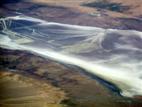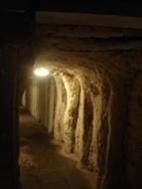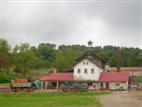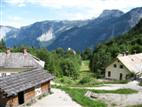Download 'The importance and relevance of the scientific content' Download PDF file
Salt and Humanity
-
 Salt mounds, Bolivia
Salt mounds, Bolivia -
 Salt collector in Lake Retba, Senegal
Salt collector in Lake Retba, Senegal -
 Salt cristals, The Dead Sea, Jordan.
Salt cristals, The Dead Sea, Jordan. -
 Salt extraction field.
Salt extraction field.
China. -
 Gallery in a salt mine
Gallery in a salt mine
Wieliczka, Poland. -
 Rann of Kutch.
Rann of Kutch.
Gujarat, India -
 Salt mine.
Salt mine.
Cacica, Romania. -
 Salt mine.
Salt mine.
Hallstat-Salzbergwerk, Austria.
EthnoSal - The importance and relevance of the scientific content
The salt and the human society
The multidisciplinary studies related to the problematics of salt (either in a solid or in a liquid state of aggregation) have underlined its overwhelming role for the alimentation, the human and animal health condition, food conservation during the unproductive seasons (long before the refrigerator era was supposed to emerge), the stability and the development of the human habitat. This function subsequently determined, in the inner areas of Europe, the tendency to control (inclusively in a military way) this natural resource irreplaceable for the human life (Alexianu M., Dumitroaia, Gh., Monah, D., Exploatarea surselor de apa sarata in Moldova: o abordare etnoarheologica, in Thraco-Dacica, 13, 1992, p. 159-167.
Salt extraction
The pre-Carpathian area of the Eastern Romania, characterized by a high density of the salt water springs (SWS) (over 130 of them known up to the present), witnesses the most ancient traces of salt exploitment all around the European area, beginning with the Starcevo-Cris culture (Weller O., Dumitroaia, Gh., The Earliest Salt Production in the World: An Early Neolithic Exploitation in Poiana Slatinei-Lunca, Romania, in Antiquity, vol. 79 (306) dec. 2005. (http://www.antiquity.ac.uk/ProjGall/weller/index.html).To this very important aspect for the whole European history we should also add the fact that the most distinctive issue which clearly set apart and distinguish the pre-Carpathian Moldavian area from other European similar ones (or supposedly from the entire world where diachronic methods of salt water spring exploitation were attested) is the continuity up to the present-day, on a difficult to imagine high intensity, of these methods, irrespective of any sort of mechanization, economical organization or legal reglementation, hence in conditions similar to the pre-industrial societies. This unique condition in Europe represents the best background for the development of complex ethnoarchaeological researches within the very boundaries of the European Union.
The current stage of research
Nowadays, researchers resort to the ethnographic analogies regarding remote areas unrelated to SWS, in order to understand the SWS related archaeological phenomena, a fact that drastically diminish the suitability degree and the credibility of the ethnographic analogy. For example, there are known: methods of lixiviation of the salt lands in Mexico (cf. Parsons J., The Last Saltmakers of Nexquipayac, Mexico: An Archaeological Ethnography D A T A), methods of extracting the ignigenic salt from the salt lakes in Africa (cf. Gouletquer P., Kleinmann D., Les salines du Manga et leur interet dans l'etude des salines protohistoriques en Europe, in Compte-rendu du Congres National des societes savants, Besancon, 1974, Paris, 21-30; Gouletquer P., Kleinmann D., 1984, Les salines du Manga, in Techniques et Culture, Paris, 3, p. 1-42); methods of recrystallisation of the SW issued of the SWS, without the use of the ceramic containers in Indonesia and the New Guinea (Weller O., Petrequin P., Petrequin A. M., Couturand A., 1996, Du sel pour les echanges sociaux. L'exploitation des sources salees en Irian Jaya (Indonesie, Nouvelle Guinee), in Journal de la Societe des Oceanistes, 102, Paris, p. 3-30; Weller O., Petrequin P., Gauthier E., Dufraisse A., 2001, Salt Springs without Pottery during Prehistory. From New Guinea to the French Jura, in Petrequin P., Beyres S. (eds.), Ethnoarchaology and its Transfers, V Meeting of the European Association of Archaeologists, Bournemonth, sept. 1999, Oxford, BAR, Intern. Series, 983, p. 37-65), ways of the water expoitation out of the salt lakes in Bolivia (Leqoc Patrice, 1999, Uyuni prehispanique. Archeologie de la Cordilla Intersalar, Oxford, BAR, Intern. Series 798.), etc.Our 1992 study attracted the attention of dr. O. Weller (CNRS Besancon, France) who obtained a succesive series of subsidies since 2003 in order to develop several ethnoarchaeological researches in the SWS area, whose importance we have apprehended. The researches were jointly undertaken by the Romanian-French team, but the subsidies were exclusively reserved to the French side. The approach of the Romanian-French team, which completely observed for the time being the exigencies specific to the ethnoarchaeology, proves the enormous worldwide accepted cognitive potential of this area. The idea to compare a neolithic situation (and of other historical eras), despite of the succesion of different archaeological cultures around the SWS, to the present-day situation gains a solid ground in the fact that the traditional methods of supply with the SW and their intensity, the distribution and utilization networks issued out of the SWS are practically identical by their nature as it is proved by the mediaeval and modern documents that cover a period of a half of a millenium.
Consequently, the methodological novelty consists in the substantiation of applying several current models to the prehistorical archaeological contexts, beginning with the ascertained fact of the continuity during the last part of the millenium of the economical models and of the social contexts generated by the SWS. This happened despite of the the major changes in the social, political, and administrative organization of the communities belonging to the pre-Carpathian area, inclusively the entrance into the European Union.
An essential impediment in the setting of the ethnoarchaeological research was the lack of the ethnographic studies related to the exploitation phenomenon of the SW issued out of the SWS. As it is already known, the ethnographers do not deal with the same type of problems as the archaelogists and as a consequence the most contexts of interest for the archaeology are never recorded. Due to this fact, an ethnographic questionnaire related to the subject of SWS exploitation from an archaeological perspective was performed, through the contribution of dr. O. Weller and dr. L. Nuninger from the CNRS Chrono-Ecology Laboratory at Besancon (France). Successfully testing of this ingenuous implement on the 2/3rd of the territory of the Neamt county during three campaigns (2004, 2005, 2006) furnished a complex database that has already enabled the first modellings.
The model of spatial analysis performed in 2007 still supplies solid arguments for the acceptance/rejection of several existing working hypothesis related to the role of the SWS in the prehistory, especially in the Cucuteni-Tripolie cultural complex. Due to the fact that the territory of the Neamt county represents only a quarter of the pre-Carpathian area rich in SWS and the fact that each campaign furnished new and unexpected issues concerning the exploitaton, utilization, distribution networks, social contexts regarding the SWS, it is necessary to extend the ethnoarchaeological research background to the entire Moldavian pre-Carpathian area. It is obvious that the modelling based on a such consistent database maximizes the credibility of the ethnographical analogy implementation for the comprehension of the contexts in the archaelogical time. Therefore, the different models furnished through the achievement of this project will undoubtely be used as a reference ground for the areas that have solid evidences in the archaeological time of the SWS worldwide. Yet, the performance of this project has a remarkable cultural importance because of the rescue of the invisible patrimony related to the SWS world.


